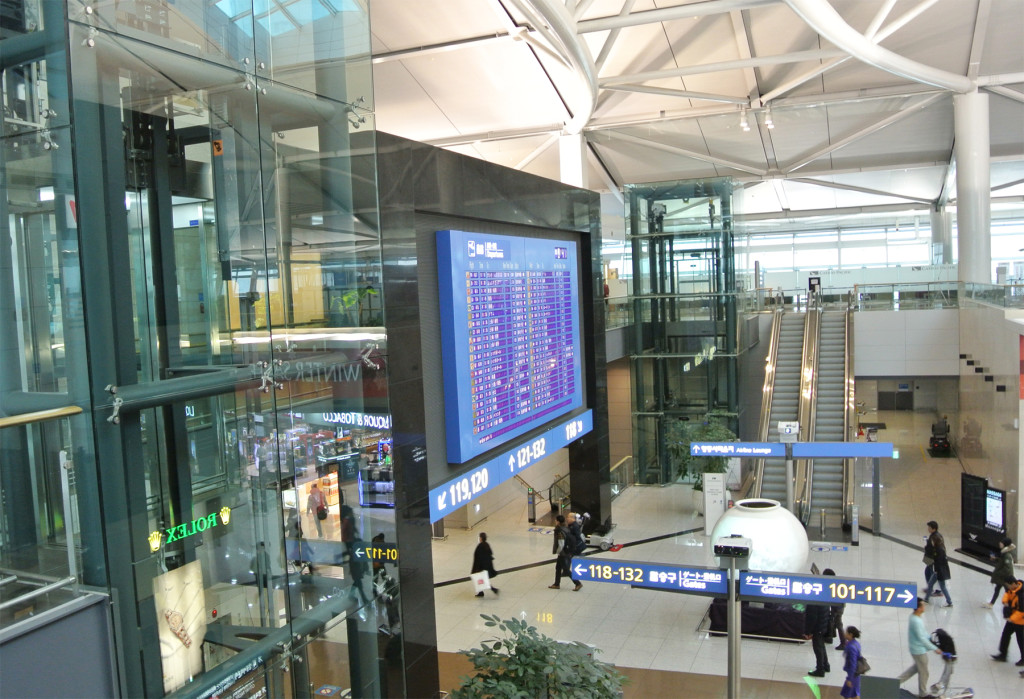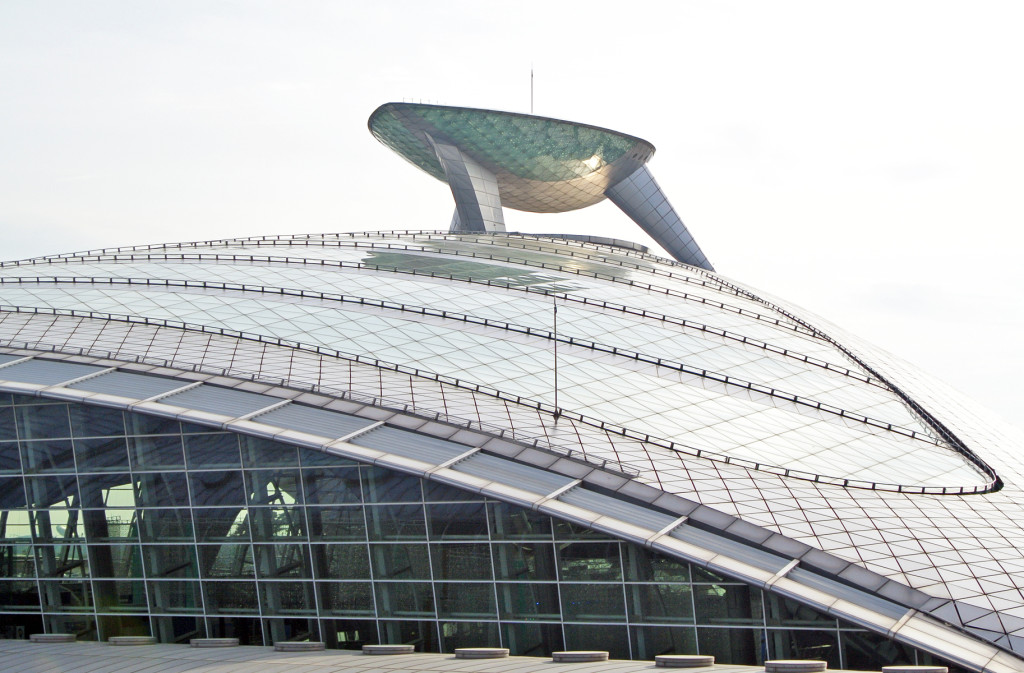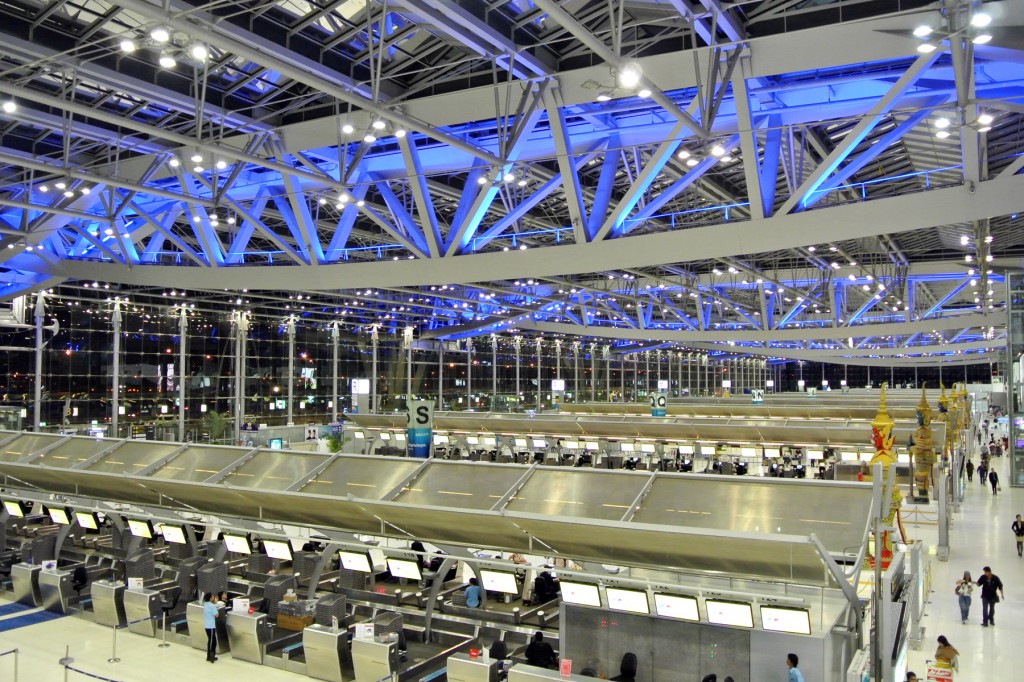The Worst in the Modern World?
FORGIVE ME for repeating myself. In earlier posts, as well as in my book, I’ve emphasized the myriad ways in which U.S. airports pale in comparison to those overseas. I hate driving a topic into the ground, but my experiences over the past few days force me to revisit this:
The other day, traveling on vacation, I flew on Cathay Pacific to Amsterdam, with a connection in Hong Kong. The connection process in HKG went like this: I stepped off the first plane into a quiet, spacious, immaculately clean concourse, and walked to my connecting gate about six minutes away. A short while later I walked onto the flight to Amsterdam.
That’s it.
Compare this, if you dare, to the process of making an international connection in the United States of America. Imagine you’re a foreign traveler arriving in the U.S. from Europe or Asia, with an onward connection either domestically or to a third country:
You step off the plane and make your way to the immigration hall, which as always is packed to capacity. After standing in line for more than an hour, you’re photographed and fingerprinted before finally being released into the baggage claim and customs hall. (Or maybe it takes even longer: after docking at the gate, airline station personnel inform you that due to extremely long lines at immigration, all passengers are being asked to remain aboard the aircraft for the time being.) Not to mention, if you’re coming from a country that’s not on the U.S. visa waiver list, you’ll need to have obtained a visa in advance just to begin this process, no matter if you’re only passing through.
Your next task is to stand at the baggage carousel for twenty minutes and wait for your suitcase. American airports do not recognize the “in transit” concept, meaning that all passengers arriving from overseas, even those in-transit to a third country, are forced to claim and re-check their luggage. Once you’ve got your bag, another long line awaits at the customs checkpoint, followed by yet another line at the luggage re-check counter.
Finally you’re released into the terminal. Of course, this building is used for “international arrivals only” — another of those peculiarly American airport concepts — and your connecting flight is leaving from a totally different terminal on the other side of the airport. To get there, you walk outside and spend fifteen minutes in the rain waiting for a bus. And we haven’t gotten to the worst part yet: once you’ve reached the correct terminal, it’s time for security screening. The line at TSA is a good twenty minutes long, maybe more.
At long last you’re in the departure concourse, which is dirty, overcrowded and loud. Babies are crying, CNN news monitors are blaring, and waves of public address announcements — most of them pointless and half of them unintelligible — wash over one another.
How long did all of that take? A solid two hours on some days. Welcome to the American airport.
Even if you’re not making a connection, the arrival process alone can often take over an hour. Back at Hong Kong, a passenger can be off the plane, through immigration and onto the train to Kowloon in fifteen minutes. I remember my last trip to Bangkok, and how I, an arriving foreigner, made it from the airplane to the taxi stand in less than ten minutes! BKK is one of the biggest and busiest international airports in the world, yet the waiting times at immigration can often be measured in seconds, never mind minutes.
Two years ago in a CNN poll of 1,200 overseas business travelers who’ve visited the United States, twenty percent said they would not visit the country again due to onerous entry procedures at airports, including long processing lines. Forty-three percent said they would discourage others from visiting. Separately, in a copy of Air Line Pilot magazine, U.S. Chamber of Commerce counsel Carol Hallett stated that “the United States risks falling behind Asia, the Middle East, and Europe as the global aviation leader.”
I’d say that battle was lost a long time ago.
To be fair, the scenario above is a worst-case to best-case comparison. Many overseas airports require a secondary security check, for example, and terminal transfers aren’t unheard of. However, if we’re going to compare the typical connection experience in the U.S. versus thetypical connection experience in Europe or Asia, with or without the need to clear security or immigration, the latter is going to win almost every time, with scattered exceptions.
The United States of America may have pioneered commercial aviation, but today the crossroads of global air commerce are places like Dubai, Frankfurt, Istanbul, Seoul, Hong Kong and Bangkok. These are the places — not New York or Chicago or Los Angeles — that are setting the standards. They’ve got the best airports, the fastest-growing airlines, and they offer the most convenience for travelers.
Some of their success is owed to simple geography. Dubai, for instance, is perfectly placed between the planet’s biggest population centers. It’s the ideal transfer hub for the millions of people moving between Asia and Europe; Asia and Africa; North America and the Near East. The government of the U.A.E. saw this opportunity years ago, and began to invest accordingly. Today, Dubai airport is one of the busiest, and its airline, Emirates, is now the largest in the world if you exclude the U.S. domestic market. The book value of the planes Emirates has on order — to say nothing of the 200 widebody jets it already operates — exceeds the value of the entire US airline industry!
Not far from Dubai, Istanbul’s Ataturk Airport is being massively expanded, poised to become a similar mega-hub. Its hometown carrier, Turkish Airlines, in addition to winning numerous service awards, now flies to more countries than any other airline in the world.
There’s not much we can do about geography. At the same time, there’s no excuse for the American aviation sector to have fallen so far. We’ve done it to ourselves, of course, through shortsightedness, underfunding, and flyer-unfriendly policies. The Federal government seems to treat air travel as a nuisance, something to be dissuaded, rather than a vital contributor of tens of billions of dollars to the annual economy. As a result our airports are substandard across a number of fronts, both procedurally and infrastructurally; our terminals are dirty and overcrowded; our air traffic control system is underfunded; Customs and Border Protection facilities are understaffed; airline passengers are groped and hassled, to the point where, if that CNN poll is to be believed, millions of them will refuse to visit the country.
And although our physical location may not be ideal as a transfer point, there are still plenty of travelers moving between continents who can and should be connecting at U.S. airports aboard U.S. carriers — if only we weren’t driving them away.
Traveling between Australia and Europe, for example, or between Asia and South America, the U.S. makes — or should make — a logical transfer point. Why can’t LAX, JFK or MIA work the way Dubai, Hong Kong or Amsterdam do? Hell, we don’t even try, beginning with the fact that our airports don’t allow for transit passengers. Connecting via the U.S. entails an enormous hassle that you don’t find in most places overseas.
Flying from Australia to Europe, a traveler has two options. He or she can fly westbound, via Asia (through Singapore, Bangkok, Kuala Lumpur or Hong Kong) or the Middle East (Dubai, Qatar, Abu Dhabi, etc.), or eastbound via the U.S. West Coast (Los Angeles or San Francisco). Even though the flying times are about the same, almost everybody will opt for the westbound option. The airports are spotless and packed with amenities; the connections painless and efficient. Changing planes at LAX on the other hand, a passenger has to stand in at least three different lines, be photographed and fingerprinted, collect and re-check his bags, and endure the full TSA rigmarole before slogging through a noisy terminal to the departure gate.
Traveling between Asia and South America, it’s a similar story. Europe to Latin America, same thing. Few passengers on these routes will choose to connect in the United States because we’ve made it so damn inconvenient. We can only guess at how many millions of passengers our carriers lose out on each year because of all this.
Insult to injury, airline tickets in America are taxed to the hilt. Overall flying is a lot more affordable than it has been in decades past, but if it feels expensive, one of the reasons is the multitude of government-imposed taxes and fees. There’s an excise tax, the 9/11 Security Fee, the Federal Segment Fee, the Passenger Facility Charges, International Arrival and Departure Taxes, Immigration and Customs user fees, an Animal and Plant Health Inspection Service charge, and so on — a whopping 17 total fees! Airline tickets are taxed at a higher federal rate than alcohol and tobacco.
Finally, you should know that the government-run Export-Import (Ex-Im) Bank of the United States provides billions of dollars in below-market financing each year to carriers overseas, helping deliver hundreds of American-built aircraft at rates not available to our own airlines. This is one of the reasons Persian Gulf carriers such as Emirates and Etihad Airways have been able to expand so rapidly. U.S. taxpayers are in fact subsidizing the growth of carriers that compete directly with our own. Ex-Im’s assistance is helpful to Boeing, but it gives foreign carriers a strong competitive advantage and undermines the health of the our airline industry.
Reprinted with permission from Patrick Smith.



Leave a Reply